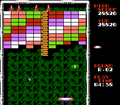Amstrad CPC[edit]
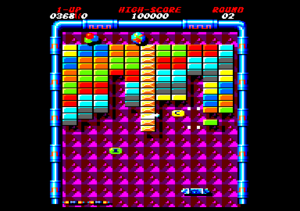

This version was ported by Ocean Software, and published in Europe by Imagine Software in 1988.
Apple II GS[edit]
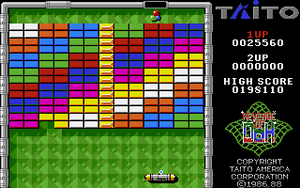
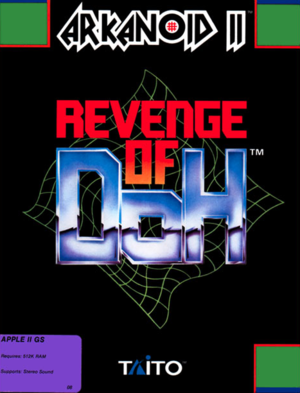
This version was published in the United States by Taito Incorporated in 1989. This port was done by John Lund and Ryan Ridges. Unlike the original game, there does not appear to be a non-GS version available for the Apple II.
Atari ST[edit]
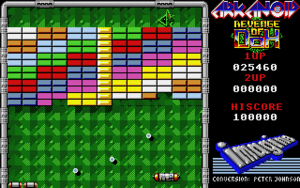
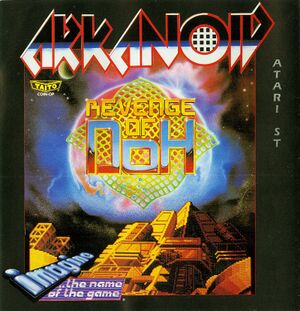
This version was ported by Imagine Software, and published in Europe in 1988.
Commodore 64[edit]
This version was ported by Ocean Software and was first published in Europe by Imagine Software in 1988. The same conversion was then published in the United States by Taito Corporation in 1989. It supports up to 4 players using the CBM/NEOS mouse, Joystick or Keyboard (keys and to control the Vaus. Silver and regenerating blocks fully regain health if the Vaus is destroyed, and regenerating blocks reappear almost instantly after being destroyed. Some of the backgrounds are also inconsistent with their arcade counterparts.
-
screen
-
European box art
-
American box art
Commodore Amiga[edit]
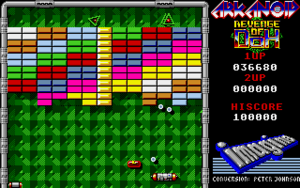

This version was ported by Imagine Software, and published in Europe in 1988. Very arcade accurate.
Famicom[edit]
This was developed for the Famicom and only published in Japan by Taito on March 8, 1988. For an unexplained reason, it was officially released as Arkanoid II, with the "Revenge of Doh" subtitle only appearing moments after starting the game. Although compatible with the existing Arkanoid controller, this version also came packaged with one. It contains an Edit mode similar to the ones found for the home computer version, and saving of stage designs was possible, but it is very limited, only allowing any two block colors of the game's eight, and background images cannot be set for custom stages (due to system limitations). It also contains a two-player versus mode, with both player's paddles appearing on the left and right side of the screen, in a pong-like contest containing bricks and power-ups.
Unlike many versions, this port contains a special 0th stage that consists of a simple battle against DOH, meant to reenact the final boss of the original Arkanoid, before moving onto the standard levels. The game itself is faithful to the original, despite the level backgrounds being misplaced (most boards use the second "Green" background) and power-ups exhibiting a unique behavior unseen in any other version.
-
screen
-
VS mode
-
Box art
MS-DOS[edit]
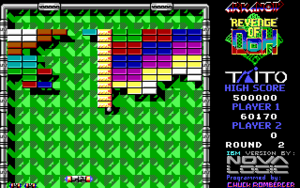
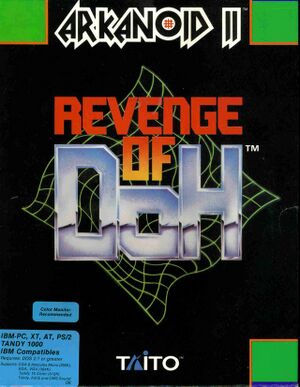
This version was published in the United States by Taito Incorporated in 1989. Two different versions were developed, one with no special sound support, and one that supported the burgeoning sound card technology that was available at the time. A very accurate port of the original that supports both CGA and EGA graphics, and includes a level editor with the ability to load and play full level sets.
MSX2[edit]
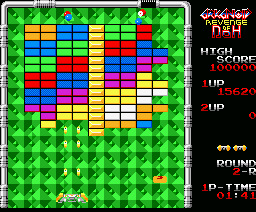

This version was developed by Nidecom Soft and published in Japan by Taito in 1989. Like the Famicom conversion, the game came packaged with a dial controller to make the controls more authentic to the arcade. Also like the Famicom game, it contains the Edit and Fight modes as well, plus the 0th stage with the prologue battle with DOH.
Sharp X68000[edit]

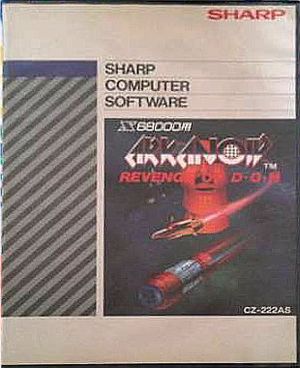
As a game released very early in the system's history, it was developed directly by Sharp Corporation for release on their home computer in 1988. Extremely arcade accurate.
Sinclair ZX Spectrum[edit]
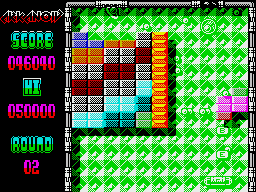
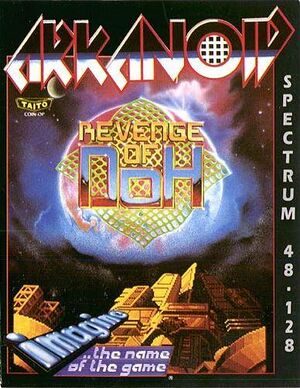
This version was ported by Ocean Software, and published in Europe by Imagine Software in 1988. It is considerably faithful to the original game given the limitations of the system. The I powerup is now called "G" for Ghost, and there is a new powerup called "SC" for "Scroll", which causes the background to scroll downwards.



